|
Home > Guides > Urban Gardening > Square Foot Gardening > Limited Space Garden |
|
Limited Space Garden |
Efficient  Small Scale Small Scale  Limited Space Limited Space |
It is little secret that an overwhelming proportion of the food we consume on a daily basis is grown in rural areas. These locations offer an abundance of space and natural sunlight, which facilitates the rapid growth and maturation of the vast majority of common edibles. Urban areas, on the other hand, are generally not considered ideal environments for the cultivation of edible fruits and vegetables because of the small space available. Such environments have limited space, are dominated by concrete and glass rather than soil, and setting up spaces devoted to growing edible plants requires careful planning in making the most of every available square foot to get the maximum yield possible.
|
 |
|
|
| |
|
|
| |
|
|
| |
Square Foot Gardening
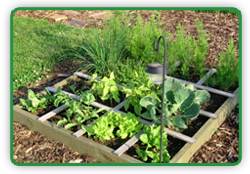 Despite the obstacles to gardening in confined spaces, increasing numbers of city dwellers and suburbanites are looking for ways to produce their own food. Whether borne of curiosity, necessity, or a desire to be more active in providing sustenance for themselves or their families, such individuals are discovering a new source of power and self-sufficiency in growing food. No longer dependant on large-scale commercial agriculture, they are learning practical skills that are sure to enrich their well-being for years to come. Despite the obstacles to gardening in confined spaces, increasing numbers of city dwellers and suburbanites are looking for ways to produce their own food. Whether borne of curiosity, necessity, or a desire to be more active in providing sustenance for themselves or their families, such individuals are discovering a new source of power and self-sufficiency in growing food. No longer dependant on large-scale commercial agriculture, they are learning practical skills that are sure to enrich their well-being for years to come.
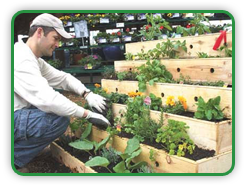 Fortunately, there are more resources available than ever to the space-conscious home gardener looking to become more responsible for the food they eat. Authors and teachers such as Jon Jeavons, Mel Bartholomew, Rosalind Creasy and others have devised thoughtful and often ingenious new techniques to make the most of limited space, soil, and sunlight and other resources in urban settings. In addition, a pioneering wave of home and indoor gardeners have done much to advance the science of hydroponics, or soil-less growing techniques, in the last several decades. Fortunately, there are more resources available than ever to the space-conscious home gardener looking to become more responsible for the food they eat. Authors and teachers such as Jon Jeavons, Mel Bartholomew, Rosalind Creasy and others have devised thoughtful and often ingenious new techniques to make the most of limited space, soil, and sunlight and other resources in urban settings. In addition, a pioneering wave of home and indoor gardeners have done much to advance the science of hydroponics, or soil-less growing techniques, in the last several decades.
|
| |
|
|
|
| |
|
|
|
|
Vertical Gardening with Limited Space
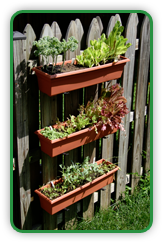 When limited by available outward space, many gardeners elect to take advantage of space upward with vertical techniques. Climbing plants such as pole beans require relatively little soil can grow up balcony railings or similar supports in urban settings. Typical crops that grow low to the ground can take advantage of sunlight at greater heights with the use of shelves, or more ideally terraced beds. When limited by available outward space, many gardeners elect to take advantage of space upward with vertical techniques. Climbing plants such as pole beans require relatively little soil can grow up balcony railings or similar supports in urban settings. Typical crops that grow low to the ground can take advantage of sunlight at greater heights with the use of shelves, or more ideally terraced beds.
Terraced Beds in Limited Spaces
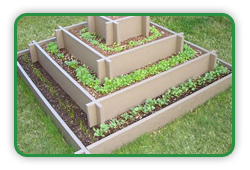 Growing food on terraces is an ancient idea that remains popular to this day in many locations around the world. Plantings at different heights to make full use of light is a simple and easy way to make the best of available resources. When selecting specific varieties for your terraced beds, remember the varying tolerance of each variety to heat and light and plan accordingly. Some vegetables, such as tomatoes and many beans, prefer more light exposure and should be planted at higher levels. Such plants are also more tolerant of the intense midday sun, and will receive greater exposure accordingly. Other plants such as greens, like spinach and lettuce, may bolt to seed prematurely, or struggle with high levels of sunlight and should be planted at lower levels. Growing food on terraces is an ancient idea that remains popular to this day in many locations around the world. Plantings at different heights to make full use of light is a simple and easy way to make the best of available resources. When selecting specific varieties for your terraced beds, remember the varying tolerance of each variety to heat and light and plan accordingly. Some vegetables, such as tomatoes and many beans, prefer more light exposure and should be planted at higher levels. Such plants are also more tolerant of the intense midday sun, and will receive greater exposure accordingly. Other plants such as greens, like spinach and lettuce, may bolt to seed prematurely, or struggle with high levels of sunlight and should be planted at lower levels.
Other Considerations
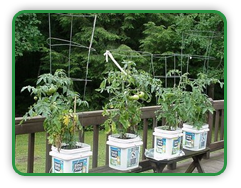 This approach can be successful both on large scale, across entire sides of hills or valleys, or on the small scale in the backyards and growing spaces of individual gardeners. Ideally, careful awareness of the changing light patterns resulting from the 'movement' of the sun across the afternoon sky will make for best use of terraced gardening. Generally in the northern hemisphere, southern-facing vantages will receive the most direct light, and make the best direction to orient terraced beds. In addition, local conditions and obstructions should always be taken into consideration in your planning. This approach can be successful both on large scale, across entire sides of hills or valleys, or on the small scale in the backyards and growing spaces of individual gardeners. Ideally, careful awareness of the changing light patterns resulting from the 'movement' of the sun across the afternoon sky will make for best use of terraced gardening. Generally in the northern hemisphere, southern-facing vantages will receive the most direct light, and make the best direction to orient terraced beds. In addition, local conditions and obstructions should always be taken into consideration in your planning.
|
|